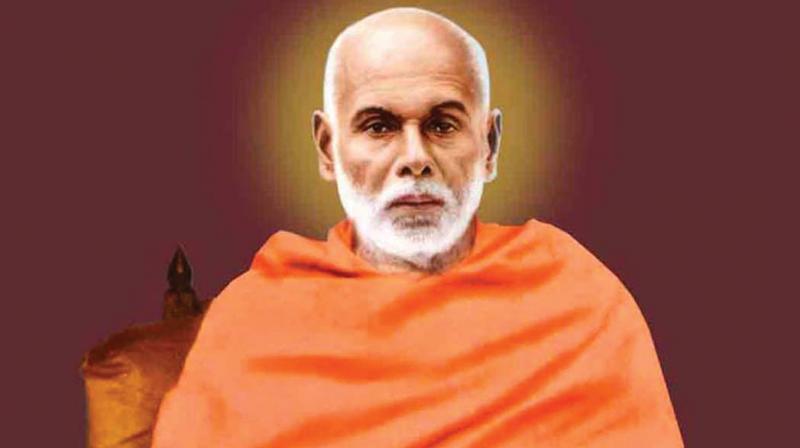Guru who made Kerala fit to bear god's own' label
Sree Narayana Guru showed courage to break 1,200-year-old monopoly of Brahmanism.

The Guru transformed Kerala into a peaceful space of fraternity and compassion in darker times of caste feuds and bloody religious riots. He enshrined values of fraternity, enlightenment and compassion in our hearts. He liberated the people from the darkness of caste and varna through the historic Aruvipuram consecration of 1888. The land was engulfed by Varnasramadharma ideology of Vedic Brahmanism from 8th century. Untouchability and pollution were part of everyday existence. It was the young avarna yogi, popularly called Nanu Asan or Nanuguru, who showed the defiance and courage to break the 1,200-year-old monopoly of Brahmanism in matters of religion and spirituality. In the context of social protests led by Ayyankali, the guru composed his Jati Nirnayam and Jati Lakshanam and asserted the oneness of all human beings. The Guru embraced a secular and pluralistic vision and social praxis. In comparison, older sages like Chattamby Swamikal, Tykad Ayya and Ayya Vaikundhar operated within the Hindu framework. Nanuguru critically embraced the humanistic essence of all religions and also encouraged the rational and scientific critique of religion and traditional culture. Whatever be the religion, the human must improve, was his chief motto. It has also become the quintessential saga of Kerala renaissance; to be human and to improve the human became the dictum of our modernity along with compassion that he so keenly taught us.
When he proclaimed “one caste, one religion and one god for man,” his disciple Sahodaran provided a critical rewriting as “No caste, no religion and no god...” He liberally acknowledged and accepted such a radical interpretation from his student. In 1917 when he composed “Daiva Dasakam” or Ten Verses in Praise of God, Sahodaran delivered his “Science Dasakam” about the transformative powers of modern sciences. The Guru encouraged the spirit of scepticism and rationality as well. In his “Anukampa Dasakam”, he imagined the Buddha as a human embodiment of ethics, Jesus as the sacred son of God and the prophet as the jewel of mercy. His own poet disciples like Mulur, Pandit Karuppan and Sahodaran have imagined him as “Kerala Buddha” in their verse. His key message of “freedom and enlightenment through education and empowerment through organization” echoes the triple gems of the Buddha; Buddham, Dhammam and Sangham.
The message of the neo-Buddha, Dr Ambedkar, is also the same: educate, agitate and organize. The thrust on enlightening education and empowering organization and the implication of the ethical struggle of life are key common components in these three historic articulations. The Guru’s concept of Dhamma Panchakam or Pancha Suddhi is nothing but the Panchaseela or the five precepts of the Buddha. His philosophic later works include liberally from the Buddhist, Jain, Christian and Islamic traditions along with the modern and rational scientific temperament. Nanuguru’s criticism of Ramraj is instructive in current violent Hinduization of the dalitbahujan masses. “If it was in the time of Ram, I would have met with the fate of Sambuka, as Hindus rule by the Smrutis”, stated the Guru in 1914. His 1916 message that he has abandoned all castes and religions and such divisions and his 1917 great message given to Sahodaran in defence of inter-dining and intermarriage are crucial in the present when hegemonic groups and dominant forms of the state encroach upon the basic rights of food, attire and language or other cultural liberties of the people. The ethical life and pluralistic teachings of the Guru are instructive for the country now more than ever.
(The author is assistant professor, Dept of English, Sree Sankaracharya University of Sanskrit, Kalady)

